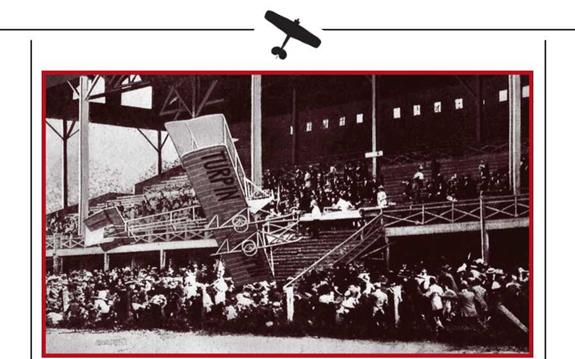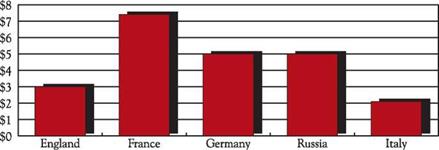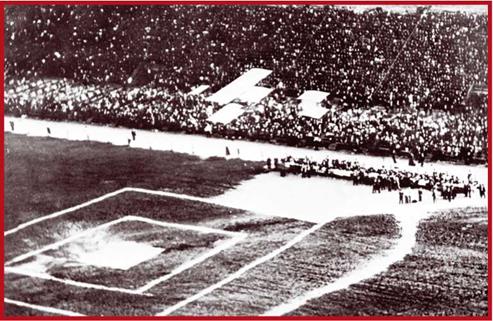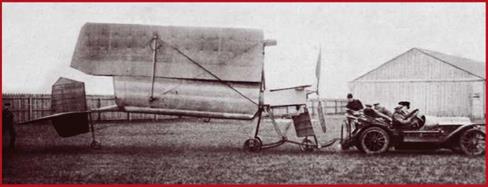EMERGENCE OF THE. COMPONENTS OF AIR POWER. AND AIR POTENTIAL
|
W |
hether or not air power exists depends on the individual components which constitute it when taken together. In the difficult period when air potential begins to be created, the greatest contribution is made by the scientific and experimental base. Thus, it was unthinkable that man would fly without first having a grasp on the properties of gases; and evolution in the knowledge of gases went alongside knowledge of aerodynamics. Having acquired some understanding of how water behaves (hydrodynamics), learned people began experimenting with gases. Their discoveries about lighter-than – air gases were quickly applied in late 18th Century aeronautics. Starting in 1804, Cayley and later Chapman studied different aerofoils, and how they behaved at different incidences. As learned societies were established with the purpose of researching flight, individual endeavour gradually became systematic and shared by the scientific community. The first scientific society was established in France in 1852. Britain’ s Aeronautical Society was founded in 1866, and the Russian Technical Society’s turn was in 1881. The fruits of this pooling of effort were not slow to emerge: using a home-made wind tunnel, Briton Phillips showed the lift benefits of cambered aerofoils, patenting a number of profiles in 1884. Not five years after Phillips’s work, Lilienthal proved these profiles’ benefits in practice by designing and flying gliders which paved much of the way to powered flight. (Concurrent studies of aspect ratio and of the best angle of incidence were no less important.)
Though early knowledge was rather limited, and though experiments were rather less than rigorous and used rather primitive equipment, the body of knowledge acquired was a basis for the early successes.
Another major barrier in the way of powered flight was the lack of suitable power – plant. There were two schools of thought among scientists. One stressed further improvements in steam engines. And indeed, such engines relative power increased, and times to building up steam pressure reduced. Between 1868 and 1872, steam engine efficiency nearly doubled! The second school of thought on powerplant sought principally new types of engine. Trial use of electric motors for propulsion showed that they were unsuitable. However, the discovery of the internal combustion engine was an important breakthrough for aeronautics and aviation. The working principle of internal combustion dated back to
the 17 th Century. However, the high cylinder temperatures could not be attained with the materials of the time. It was only in 1860 that Frenchman Lenoir built a working model of an internal combustion engine. It was water-cooled and burned lighting gas. But both this engine, and the much later Otto – Langlen one had nothing much to offer set against steam units. Only the four-stroke power unit designed by German Otto late in the late 1870s was worthy of development. Daimler refused to use lighting gas, choosing petrol instead. This removed the need for bulky and heavy gas storage vessels. With time, the needs of aviation began to influence internal combustion engine development. Such powerplant became standard due to its compact size, quick starting and unmatched relative power. At the end of the period under review, their output varied from 40 to 100hp (Table 1, Graph 2) (experimental FIAT units ran at 300hp and even 700hp).
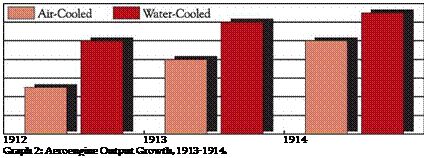
Daimler led the water cooled engine field, followed by Argus. Despite the weight of coolant, such engines were more powerful, longer-lasting and more reliable. How-
|
T a b l e 1: Aeroengine Weight and Output, 1913-1914
140 120 100 80 60 40 20 0 |
ever, many builders preferred the air-cooled French Gnome engine despite its great frontal area (and hence drag): it was lighter and cheaper. Aeroplanes using it were light, had shorter take-off and landing runs, and were more manoeuvrable (yet not as reliable…). Air-cooled engines also burned more lubricant. Yet, controversial aspects aside, the Gnome was licensed for production in Germany and Britain.
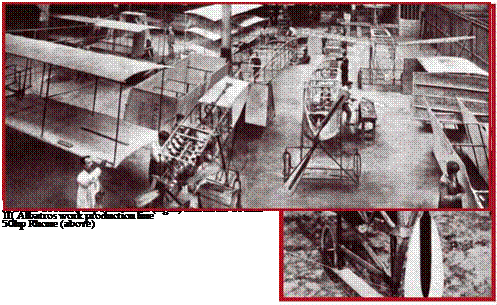
Science and research remained the driving force behind the creation of air potential until the close of the first decade of the 20th Century. By that time, a relatively stable base had been established to assist the pursuit of certain tasks in the air. The period began with large-scale production of Parcival-Siegsfeld balloons, the vesting of the DELAG paramil-
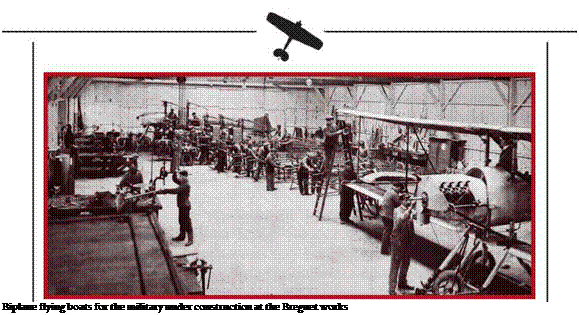
itary/civilian Zeppelin operator, and initial series production orders for Wright, Bleriot, Farman, Voisin, Etrich and other aeroplanes. Before the start of the Great War, science determined air power, as demonstrated by the scramble to squeeze ever better technical indicators from all manner of aerial devices. It was also science that sourced the people who were to form design teams and apply their scientific skills in a commercial direction.
Manufacture also grew apace, with 2718 aeroplanes being made in 1914: 1348 in Germany, 541 in France, 535 in Russia, 245 in Britain, and 49 in the USA. Performance grew along with production capacity. Frequent air shows and competitions became an added stimulus for designers and pilots to challenge range, endurance and speed records. Amply subsidised by state and private funds, these events also became marketplaces. Graphs 2, 3, and 4 show how rapidly flying machines progressed in that period.
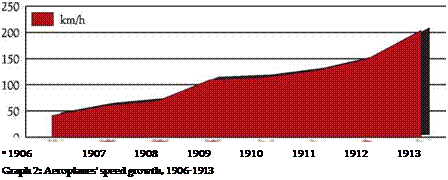 |
However, it was clear that these achievements had to have a context of clear and specific requirements. Having emerged, the aeroplane had to become civilised: it had to be made capable of showing its superiority vis-a-vis other types of airborne vessel in practice by becoming a competent and comfortable platform able to perform set tasks
1200
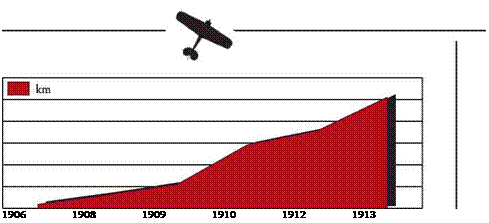
![]()
![]()
![]()
 1000
1000
800
600
400
200
0
9000 8000 7000 6000 5000 4000 3000 2000 1000 0
with ease. Thus, the demonstration of air power was the only way air potential could be actualised. In other words, a sufficient number of aeroplanes had to be utilised by national services specifically formed to operate them. This logically leads to one of the major issues in aviation from its emergence to the present: the issue of security. This in turn depends on the requirements of another important component which came to the fore after the first air arms had been formed: the availability of a sufficient number of reliable and competent aeroplanes.
Poor safety affected aviation development adversely. If 29 pilots had died by 1910, in 1911 they numbered 74, in 1912: 127, and in 1913: 154 (plus several hundred injured survivors). (Graph 5)
![]()
|
|
Seattle, Washington: the pilot loses control during a risky demonstration flight and heads into the grandstand. Onlookers fled for their lives, but three died and 12 were hurt |
Clearly, if aeroplanes were not to remain an exotic plaything, much had to be done to improve their reliability and safety. Flight safety became a concern from 1910 onwards. To get things going, the state in the face of relevant offices such as war ministries, set aside prize money for air safety. Britain led the way here, sponsoring some excellent aeroplanes such as the BE2, the Avro 504, a Sopwith, and others. These saw active use into the 1930s, the Avro even serving in Soviet flying schools as the У-1 (U-1). The statistics showed these main causes of accidents: pilot error; poor aeroplane stability causing upsets in bad weather or in inexperienced hands; insufficient aeroplane strength causing structural failures; powerplant unreliability. The stability issue was tackled in two ways. The first one was to enhance aeroplanes’ natural aerodynamic stability. The key here was to select a suitable configuration. In-depth studies were undertaken of wing profiles, control surface action, trim, and propeller/rotary engine torque. The result was an advance in enlightened scientific methods of selecting a configuration. Valuable data was obtained in early wind tunnels built in Britain, France and Russia. Using data from the Royal Aircraft Factory Research Centre, the British built the RE 1 biplane which flew for ten minutes without any control inputs from its pilot. Apart from being pleasant for the pilot, this ability coincided with military requirements for stable aerial observation platforms. Thus emerged a trend to overestimate the significance of aeroplane stability. This trend was to rule supreme until the first dogfights, when its deleterious effect was shown. Similar events took place in Germany, Russia, and France: all countries leading aviation ‘fashion’ at the time. The second way in which the stability
|
Farman aeroplanes enjoyed a good reputation among pilots for their enviable stability |
|
Щ The Curtiss twin-engined flying boat, specially built to fly the Atlantic, is notable for featuring one of the earliest autopilots |
issue was tackled was to create a device allowing straight and level flight without pilot input. Such a device had to restore steady flight after atmospheric upsets or involuntary pilot inputs. Over 120 such devices were invented and patented before the First World
War. The poor level of knowledge and experience at the time were reflected in the many and serious defects of such early ‘autopilots,’ rendering all of them impracticable.
Aircraft structures were a great safety problem in themselves. In the dawn of aviation no stress calculation techniques whatsoever were applied to aeroplane structural design. French and British stressmen began static testing of airframes only after the first wing failure crashes in 1911. Little by little, designers relinquished timber for major stress bearing elements, adopting various kinds of metal instead. Another result of the stress studies was the preference for the stiffer biplane configuration, which was to stay in vogue until the mid-1930s. (Graph 6)
Engine reliability also improved, as evidenced by the first flights measured in hours. Multi-engined aeroplanes able to maintain flight and land safely after an engine failure, also appeared. Russia led the way here, Igor Sikorski’s trials of his Russkiy Vityaz and Ilya Muromets proving that the multi-engined formula was a contribution to safety. The latter type was also the world’s first strategic bomber and strategic reconnaissance aeroplane to enter service.
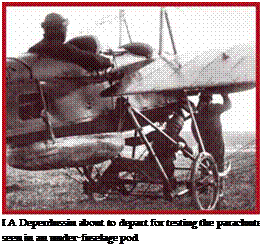 The arrival of the parachute was another great boost to safety. Known to man for a long time before aeroplanes, parachutes were first used for egress from balloon gondolas. The first rucksack parachute was designed by Kotel’nikov in 1911. Similar designs quickly appeared in the USA (1912) and Germany (1913). The first life saved by this progenitor of modern emergency escape devices was that of American pilot Lowe in 1912.
The arrival of the parachute was another great boost to safety. Known to man for a long time before aeroplanes, parachutes were first used for egress from balloon gondolas. The first rucksack parachute was designed by Kotel’nikov in 1911. Similar designs quickly appeared in the USA (1912) and Germany (1913). The first life saved by this progenitor of modern emergency escape devices was that of American pilot Lowe in 1912.
 |
|
Efforts to improve safety went hand in hand with another very important
u 1909 1910 1911 1912 1913 1914
Graph 6: Monoplanenes % from all aeroplanes production, 1909-1914
component of air power: the availability of adequately trained air and ground personnel. The newly created flying schools began not only to impart flying skills to pilots, but also to train mechanics in aeroplane maintenance. Legislative instruments were adopted to regulate the operation of aeroplanes in the air and on the ground and define rights and responsibilities. The first textbooks and flight manuals were published.
As the number of aeroplanes grew, so did the number of national offices concerned in one way or another with their operations, and so did the requirements for crew training. As the nature of tasks performed by crews evolved, so did flying school curricula. The first military flying schools opened, training pilots in the specialist arts of aerial observation and reconnaissance, and the skill of flying at above 1000m: the altitude then considered optimal for such purposes. As mentioned above, those wishing to serve in the emergent air arms had to have military wings. Bearers of military wings were specifically trained to fly specially designed army and navy aeroplanes. For instance, one difference between civil and military flying schools was that while the former rarely strayed above 600m, the latter were trained to reach observation altitudes of 1000m or more, dive to 600m to avoid artillery fire, and practise dead stick landings with an idling or switched off engine.
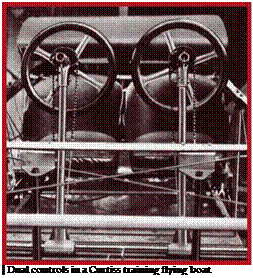 By 1913 improving aeroplane reliability and performance allowed quite daring aerial manoeuvres. Independently of one another, Nesterov and Pegoo flew loops, proving that aircraft were capable of sustaining great loadings in the air. This was the start of aerobatic training which included learning spin recovery skills. A danger to the unwary to this very day, spins are uncontrolled falls at high angles of attack while rolling, pitching and yawing. The number of aerobatic-trained pilots grew rapidly, reaching 30 in Russia alone by early 1914. Thus, despite the greater complexity of aeroplanes and flying, the flight hours per accident indicator improved twenty fold. Whereas in 1909 an accident occurred once every 200 flight hours on average, by 1914 it occurred once every 4000 hours.
By 1913 improving aeroplane reliability and performance allowed quite daring aerial manoeuvres. Independently of one another, Nesterov and Pegoo flew loops, proving that aircraft were capable of sustaining great loadings in the air. This was the start of aerobatic training which included learning spin recovery skills. A danger to the unwary to this very day, spins are uncontrolled falls at high angles of attack while rolling, pitching and yawing. The number of aerobatic-trained pilots grew rapidly, reaching 30 in Russia alone by early 1914. Thus, despite the greater complexity of aeroplanes and flying, the flight hours per accident indicator improved twenty fold. Whereas in 1909 an accident occurred once every 200 flight hours on average, by 1914 it occurred once every 4000 hours.
Convinced of aeroplanes’ military and civil utility, the governments of nations able to develop aircraft and airship manufacturing set aside considerable funds for equipping their new air arms. By 1913, over 1000 aeroplanes had entered military service around the world.
|
|
|

|
Military aviation budgets for 1913 came to 7.4m dollars in France, 5m dollars in Germany and Russia, 3m dollars in Britain, and 2.1m dollars in Italy. (Graph 7)
The trend was for these sums to grow apace, and moreover for the share of aviation to grow at the expense of aeronautics. Aeroplanes were gradually becoming recognised as more versatile for the range of tasks set before aviation and aeronautics. Initially, the military bought proven designs for sports and private-owner use, but specialist military designs emerged from 1912. The latter all had two crew members
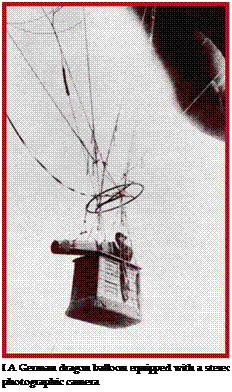 and stronger landing gear, and were easily reconfigured for transportation by road, river or sea. Before impressment into service, such aeroplanes were tested by special acceptance bodies, often on top of having proven their qualities in numerous fly-offs and competitions. This was then a new departure which later found its way to other areas due to its effectiveness.
and stronger landing gear, and were easily reconfigured for transportation by road, river or sea. Before impressment into service, such aeroplanes were tested by special acceptance bodies, often on top of having proven their qualities in numerous fly-offs and competitions. This was then a new departure which later found its way to other areas due to its effectiveness.
Alongside the development of aeroplanes as such, another component of air power was taking shape: on board and ground equipment. Pre-First World War army and navy aeroplanes were decidedly multi-role. Much experimentation with different equipment thought useful for the various armed forces which employed aeroplanes took place. Specialised airborne cameras appeared whose images helped determine the precise location of enemy forces. Reliable cameras with moderate focal length optics, comfortable for use from aer-
|
A Type L planview camera fitted to a B. E.2a |
|
Щ A machine gun equipped Nieuport 4 |
oplanes and tethered balloons, entered production. This in turn led to the design of mobile photographic labs to process the cameras’ output for immediate use. However, the money involved was huge, and thought unjustified amid prevailing expectations that the coming war would be so swift and mobile, events would overtake photographic intelligence. Thus mobile labs were not mass produced, reliance being placed on field laboratories instead. Observation equipment derived from the artillery also entered wide scale use, especially in naval aviation.
Initial attempts to arm airborne vessels with firearms date back to this period. Their use was directed at both the ground and the air. Despite significant advances, the fitting of machine guns to aeroplanes was still very much an experiment prior to the Great War. The major problem was the difficulty of firing safely through the propeller disc, which limited the use of machine guns. Also, the available machine guns were either too primitive, or too heavy.
Experience of manual bombing in the Tripolitanian and Balkan Wars showed that its effect was more psychological than genuinely damaging to the enemy. The bombs used had unknown ballistic properties: they were mostly adaptations of infantry hand grenades. Purpose designed aeroplane bombs, though of a modest size in keeping with the capacity of early aeroplanes, gradually acquired the shape we know today. Most widespread were ‘bat cubs,’ weighing five kilos, drop-shaped and finned so as to drop vertically. Their ap-
|
| Bombing trials with training bombs near Los Angeles, California; the aeroplane seen is a Farman biplane |
pearance led to the design of special bombsights and bomb-holders. Though patented devices were insufficiently effective, individual pilots demonstrated exceptional bombing precision during training or in competitions. One such was Lieutenant Gobert who scored 12 hits in a 20m circle from a height of 200m with his 15 bombs (make not recorded) during a 1912 international military display. In the next heat, the same officer scored eight hits of a 120x50m target from a height of 450m. Other pilots of the period were not far behind, including Bulgarian ones during the preparations for the second stage of the First Balkan War. However, airmen in general entered the Great War unarmed but for their handguns (which they indeed used in anger in the conflict’s opening stages!).
The period saw early attempts to protest airmens’ seats against ground fire. Though easy to fit, however, the steel plate used was too heavy. Armour plating had to wait for sturdier airframes and more powerful engines.
The means and equipment which ensure effective use of military aeroplanes are another important component of air power. Initially, this included bases where men could train and equipment could be tried, and manufacture and maintenance workshops. Army and navy orders gradually encouraged factory-based aircraft manufacture. Specialised engine and propeller companies emerged. By the start of the Great War, the world had no fewer than 75 aircraft and 23 aeroengine makers capable of turning out 1600 aeroplanes and 2200 engines a year. This was in addition to fully equipped military workshops and airfields.
Command and control, the last but not least important component of air power, remained most problematic in its nascence. The reason for this was that radio communications were not yet adapted for routine air-to-air or air-to-ground operation. This circumstance introduced delays in the passing on of aerial reconnaissance information. Even though initial trials in 1910 brought very encouraging results, radio sets were too heavy and bulky for the typical aeroplane then.
However, radio was not the only concern of commanders who had to juggle balloons, dirigibles, and aeroplanes around the battlefield. Limited experience had not yet suggested the sort of unit structure that would be right for aviation and aeronautics. Part of engineering or communications corps, their commanders lacked the independence and flexibility.
Experience from manoeuvres and local wars gave some clarity on how different types of flying machine are best employed. Those first airborne weapons, spherical balloons, were on their way out. However, despite their known disadvantages, they were still used for secondary and auxiliary tasks such as defending fortresses and targets to the rear. Their place at the battlefront was taken by tethered kite balloons, which were stable observation platforms. In recognition of their still limited mobility, they were intended for static and defensive warfare. Aeroplanes and airships were to be the proactive agents on the battlefront, with aerostatic balloons being used for
observation, aerial reconnaissance, and artillery correction. Forward-positioned aerostats would conduct stereoscopic photography of enemy formations, allowing their locations, firepower, and force concentrations to be determined precisely. In attack, aerostats were only assigned the artillery correction role.
Observation altitudes reached 1300m, with some 600 to 1000m being average, and 400m being the minimum. Aerostats could only carry one aeronaut to maximum altitude, which made effective data transmission more difficult. A normal three of four-strong crew could ascend to no more than 600m.
Aerostats’ distance from the frontline depended on observation altitude and the presence of enemy artillery (especially long-range guns), and was usually four to six kilometres.
Observers’ effectiveness depended on locale (the presence of characteristic features) , on how well enemy manpower and equipment was camouflaged, and on the weather. Major weather indicators were visibility and wind speed. Parcival-Siegsfeld balloons could cope with no more than some 15m/s of wind. Fair visibility constituted anything over ten kilometres. Given such conditions, experienced aeronauts could locate a single artillery battery 15 to 18km away by looking for gun flashes.
Aerostats’ good visual range and ability to fly equally well from shipboard as from the shore made them valuable to the fleet, especially in naval blockades. Apart from conducting general lookout and recce duties, naval aeronauts could spot enemy sur-
|
A French balloon unit filling its vessel with hydrogen |
|
I An Italian semi-rigid airship |
face and submarine shipping and mines, correct artillery fire, and relay ship-to-ship or ship-to-shore messages.
Operational and strategic intelligence duties were assigned to airship crews. The last peacetime manoeuvres proved that general staffs’ requirements of early 1914 could only be met by airships. These requirements included the ability to penetrate enemy airspace to a depth of 500 or 600km at a height of 2400m: indicators far beyond the ability of any mass produced heavier-than-air craft at the time.
Another great advantage of airships was their great loadability. This enabled them to bomb fortresses, troop and equipment concentrations, harbours, stores and industrial establishments. In penetrations of the order of 600km, airship warloads were not less than 300 kg, with corresponding increases at shorter ranges. However, the fact is that prior to the Great War very few airships boasted anything like the above indicators. Those that did were mostly German. (Graph 8)
Wisdom from the initial manoeuvres and local wars in which aeroplanes were involved seemed to suggest they would be most useful for operational reconnaissance. The same events also showed some aeroplane utility in tactical recce, and in artillery
|
Graph 8: Airships’ payload and range growth, 1900-1914 |
correction, but this was ignored. Apart from mistrust of aeroplanes among commands, and short-sightedness on the part of military bureaucrats, this was also due to pilots’ dislike of such hard and risky missions which required concerted training and offered no guarantee of success. Yet artillery correction soon became a routine task for aviators, especially against well camouflaged targets. Since no manuals and agreed procedures of any kind existed, flyers and gunners would thrash things out informally before a flight. Naturally, results were patchy, took long to arrive and were often at odds with gunners’ real needs. Military theoreticians correctly surmised that informal ‘negotiations’ would be unthinkable in the mobile general war they expected, and began developing formalised procedures. Things did not get much further than those early developments, being overtaken by the outbreak of war.
The next task assigned to aviators was to strike enemy targets. The Tripolitanian and Balkan Wars, in which aviators from many non-combatant nations volunteered, convinced experts that there was considerable likelihood of success in bombing from aeroplanes. They concluded that aeroplanes would be best used against targets that were large or covered a great area. Working heights would be between 800 and 1000m. Two approaches were foreseen: star patterned and squadron attacks. The former involved individual aeroplanes approaching the target from a variety of directions, whereas the latter involved a group approaching together. In both cases the aim was to saturate the target with bombs to an adequate extent. In any case, considering the relatively small number of aeroplanes, no specialised bombing units were formed before the Great War, commanders having to rely on what (if any) strike capacity happened to be available in units under their command.
The Balkan Wars brought the dogfight a stage nearer. Though isolated, the encounters on the Bulgarian/Turkish and Bulgarian/Servian fronts did not escape analysts’ notice. However, neither designers, nor strategists offered coherent views on dogfighting. The very idea of one aerial vessel being attacked by another was only addressed in the
|
I Good portability was among the conditions set before candidates to supply aeroplanes to the military: here a Breguet is seen readied for transportation by road |
—————————————— >——————————————————
case of some airships, which were accordingly fitted with machine guns. Aeroplanes lacked such defensive armament. While France, Britain, Belgium, Russia and Austria – Hungary did some defensive/offensive armament trials, conclusions drawn and solutions implemented were disparate. For instance, influenced by the forward-positioned engine and puller propeller, the Austro-Hungarians decided to position the observer aft and let him handle the weapon. Others felt it was better to site the engine aft, use a pusher propeller, and put the observer/gunner at the front.
The use of aeroplanes for liaison between distant columns or units was another long-drawn contentious issue. Since everyone expected a mobile war, aerial liaison scenarios were tried at manoeuvres, and in 1911 some pilots called for a purpose – designed swift and light aeroplane. The call was heard only in Britain, where the satisfactory Scout flew eighteen months later.
Stemming from man’s earliest attempts to break the bonds of gravity, the genesis of air power saw early aeroplanes used not just by the military, but also for transportation and other civilian business. This genesis stimulated great scientific and industrial effort. The following general conclusions may be drawn:
1. Even at their nascence, air power and air potential became a priority in industrially developed nations which could afford to keep pace with advancing research and technology;
2. The emergence and development of air power’s various components was evolutionary, and was governed as much by the new environment as by the objectives set by national political and military leaders;
3. The tasks set before early aviation led to the creation of specialised institutions at the government and private enterprise levels;
4. The improvement of aeroplanes’ capabilities led to enhanced status for the specialised institutions which started on their way to becoming pillars of national military and economic might;
5. As the components of air power and air potential grew in importance, they began to form a system with its typical interconnections, points of entry and exit, and sources;
6. The major development stimulus for air power and air potential was the drive for supremacy in the new environment of the air. The first local conflicts in which the nascent components of the new system played a part proved that this system had a future in the attainment of political, business and military goals.
The first shots of the world’s first general war put an end to the period of emergence in the development of air power. Although regarded romantically today, this period saw many rational solutions which hold true to this very day. Later, air potential would draw on experience gained in this period to develop both its peaceful civilian aspects, and its military side.
|
No |
Designation/ N ante |
Year |
Origin |
Volume, m3 |
Length, m |
Diameter, m |
Power, kWt |
Payload, kg |
Speed, km/h |
Type |
|
1 |
LZ-1 |
1900 |
Germany |
11,300 |
128 |
11.65 |
21 |
n. a. |
28.1 |
Rigid |
|
2 |
LZ-2 |
1905 |
Germany |
11,300 |
128 |
11.65 |
126 |
2800 |
39.6 |
Rigid |
|
3 |
LZ-4 |
1908 |
Germany |
12,200 |
136 |
11.65 |
144 |
2900 |
43.9 |
Rigid |
|
4 |
Lebed’ |
1909 |
Russia |
3700 |
61.4 |
11.1 |
51 |
920 |
36 |
Semi Rigid |
|
5 |
LZ-5 |
1909 |
Germany |
15,000 |
136 |
13 |
144 |
4600 |
48.6 |
Rigid |
|
6 |
Grif |
1910 |
Russia |
7300 |
700 |
14 |
162 |
3700 |
59 |
Soft |
|
7 |
LZ-7 |
1910 |
Germany |
19,300 |
148 |
14 |
264 |
6800 |
60.1 |
Rigid |
|
8 |
LZ-10 |
1911 |
Germany |
17,800 |
140 |
14 |
321 |
6500 |
75.6 |
Rigid |
|
9 |
Schute-Lanz SL-1 |
1911 |
Germany |
19,500 |
131 |
18.4 |
368 |
4500 |
70.9 |
Rigid |
|
10 |
Mayfly |
1911 |
Britain |
18,760 |
156 |
14.6 |
265 |
n. a. |
n. a. |
Rigid |
|
11 |
LZ-14 |
1912 |
Germany |
22,465 |
158 |
14.86 |
363 |
9400 |
76.3 |
Rigid |
|
12 |
P |
1912 |
Italy |
4900 |
62 |
12.6 |
103 |
1490 |
65 |
Semi Rigid |
|
13 |
PL-17 |
1912 |
Germany |
9830 |
85 |
16 |
250 |
2150 |
64.8 |
Soft |
|
14 |
PL-16 |
1913 |
Germany |
9830 |
94.15 |
15.48 |
265 |
2716 |
67.6 |
Soft |
|
15 |
LZ-21 |
1913 |
Germany |
20,870 |
148 |
14.86 |
396 |
8800 |
73.8 |
Rigid |
|
16 |
Astra |
1913 |
Russia |
10,000 |
78 |
15 |
294 |
5400 |
59 |
Soft |
|
17 |
PL-18 |
1913 |
Germany |
8800 |
84 |
15 |
265 |
2200 |
67 |
Soft |
|
18 |
PL-20 |
1914 |
Germany |
9830 |
92 |
15 |
265 |
3300 |
78.1 |
Soft |
|
19 |
M |
1914 |
Italy |
12,500 |
82.7 |
16.9 |
287 |
5300 |
70 |
Semi Rigid |
|
20 |
LZ-24 |
1914 |
Germany |
22,470 |
158 |
14.86 |
441 |
9200 |
80.6 |
Rigid |
|
Designation |
Origin |
Year |
Type |
Engine, Rating |
Crew |
Span, m |
Length, m |
Wing Area, sq m |
Gross Weight, kg |
Max Speed, km/h |
Range/ time |
|
1 |
2 |
3 |
4 |
5 |
6 |
7 |
8 |
9 |
10 |
11 |
12 |
|
Flyer 1 |
USA |
1903 |
Biplane |
Wright, 12hp |
1 |
12.3 |
6.4 |
47 |
340 |
approx 18 |
285m/59s |
|
Flyer 2 |
USA |
1904 |
Biplane |
Wright, 16hp |
1 |
12.3 |
6.4 |
47 |
360 |
approx 47 |
4.8km/5m 4s |
|
Flyer 3 |
USA |
1905 |
Biplane |
Wright, 2 lhp |
1 |
12.3 |
8.5 |
47 |
388 |
approx 60 |
39km/38m 3s |
|
14 bis |
France |
1906 |
Biplane |
Antoinette, 50hp |
1 |
11.5 |
9.7 |
52 |
300 |
approx 60 |
220m/21.2s |
|
Voisin-Delagrange |
France |
1907 |
Biplane |
Anotinette, 50hp |
1 |
10 |
n. a. |
40 |
n. a. |
n. a. |
500m/n. a. |
|
Bleriot VI |
France |
1907 |
Tandem Wing Biplane |
Antoinette, 50hp |
1 |
5.9 |
n. a. |
20 |
280 |
n. a. |
184m/n. a. |
|
Voisin-Farman 1 |
France |
1907 |
Biplane |
Antoinette, 50hp |
1 |
10.2 |
13.3 |
40 |
520 |
approx 45 |
771m/52.6s |
|
Wright A |
USA |
1908 |
Biplane |
Wright, 30hp |
2 |
12.5 |
8.9 |
47.4 |
500 |
approx 60 |
125km/2h 20m 23s |
|
Bleriot VIII |
France |
1908 |
Monoplane |
Antoinette, 50hp |
1 |
11 |
10 |
22 |
425 |
approx 76 |
14 km |
|
REP 2 |
France |
1908 |
Monoplane |
n. a., 30hp |
1 |
8.6 |
n. a. |
15.8 |
350 |
n. a. |
1.2 km |
|
Verber 9 |
France |
1908 |
Biplane |
Antoinette, 50hp |
1 |
10.5 |
10.7 |
30 |
400 |
40 |
500m/n. a. |
|
Cody 1 |
Britain |
1908 |
Biplane |
Antoinette, 50hp |
1 |
15.8 |
n. a. |
n. a. |
n. a. |
45 |
450m/n. a. |
|
Voisin-Farman 1 bis |
France |
1908 |
Biplane |
Antoinette, 50hp |
1 |
10.2 |
13.3 |
40 |
530 |
54 |
40km/n. a. |
|
Antoinette 4 |
France |
1908 |
Monoplane |
Antoinette, 50hp |
1 |
12.8 |
11.5 |
50 |
450 |
65 |
155km/n. a. |
|
Voisin Standard |
France |
1908 |
Biplane |
Antoinette, 50hp |
1 |
10 |
12 |
40 |
550 |
55 |
n. a. |
|
Grade 1 |
Germany |
1908 |
Triplane |
Grafe, 16hp |
1 |
10 |
8.5 |
25 |
230 |
70 |
60m/n. a. |
|
Bleriot XI |
Germany |
1908 |
Monoplane |
Anzani, 25hp |
1 |
7.8 |
8.2 |
14 |
300 |
60 |
n. a. |
|
Golden Flyer |
USA |
1909 |
Biplane |
Curtiss, 50hp |
1 |
8.7 |
8.7 |
24 |
376 |
60 |
n. a. |
|
Farman 3 |
France |
1909 |
Biplane |
Gnome, 50hp |
1 |
10 |
11.2 |
40 |
550 |
60 |
223km/n. a. |
|
Antoinette 6 |
France |
1909 |
Monoplane |
Antoinette, 50hp |
1 |
12.8 |
11.5 |
50 |
520 |
85 |
180km/n. a. |
|
Kudashyov-1 |
Russia |
1910 |
Biplane |
Anzani, 35hp |
2 |
9 |
10 |
32 |
420 |
n. a. |
60m/n. a. |
|
Gakkel’ 3 |
Russia |
1910 |
Biplane |
Anzani, 35hp |
1 |
7.5 |
7.5 |
29 |
560 |
80 |
400m/n. a. |
|
Grizodubov |
Russia |
1910 |
Biplane |
ARB, 30hp |
1 |
12 |
10.9 |
n. a. |
600 |
70 |
4.4km/n. a. |
|
Laner Simon 1 |
Austria- Hungary |
1910 |
Biplane |
Anzani, 25hp |
2 |
13 |
n. a. |
47 |
550 |
70 |
n. a. |

|
1 |
2 |
3 |
4 |
5 |
6 |
7 |
8 |
9 |
10 |
11 |
12 |
|
Etrich Taube |
Austria- Hungary |
1910 |
Monoplane |
Clerget, 50hp |
2 |
14 |
10 |
34 |
430 |
80 |
75km/n. a. |
|
C-6A [S-6A] |
Russia |
1911 |
Biplane |
Argus, lOOhp |
2 |
11.8 |
8.8 |
35.4 |
990 |
111 |
n. a. |
|
Curtiss A1 |
USA |
1911 |
Biplane Flying Boat |
Curtiss, 75hp |
2 |
8.74 |
8.43 |
30.75 |
714 |
105 |
n. a. |
|
Bristol R1 |
Britain |
1911 |
Monoplane |
Gnome, 50hp |
1 |
9.2 |
n. a. |
15 |
372 |
105 |
n. a. |
|
Fokker Spin |
Germany |
1911 |
Monoplane |
Argus, lOOhp |
2 |
11 |
7.75 |
22 |
400 |
90 |
45km/n. a. |
|
Nieuport 4 |
France |
1911 |
Monoplane |
Gnome, 50hp |
1 |
11.6 |
8 |
18 |
600 |
105 |
330km/n. a. |
|
Farman MF7 |
France |
1912 |
Biplane |
Renault, 70hp |
2 |
15.8 |
n. a. |
48 |
728 |
90 |
n. a. |
|
Flenriot D |
France |
1912 |
Monoplane |
Gnome, 50hp |
1 |
8.9 |
n. a. |
14 |
480 |
120 |
n. a. |
|
Albatros |
Germany |
1912 |
Biplane |
Argus, lOOhp |
2 |
14.4 |
n. a. |
39 |
950 |
100 |
1200km |
|
Bristol Scout |
Britain |
1912 |
Biplane |
Gnome, 80hp |
1 |
6.7 |
n. a. |
14.3 |
280 |
150 |
n. a. |
|
Dun DB |
Britain |
1912 |
Flying Wing Biplane |
Green, 50hp |
1 |
10.97 |
6.4 |
21.35 |
772 |
97 |
n. a. |
|
Farman 22 |
France |
1913 |
Biplane |
Gnome, 80hp |
2 |
15 |
n. a. |
41 |
680 |
90 |
n. a. |
|
BA2A |
Britain |
1913 |
Biplane |
Renault, 70hp |
2 |
10.68 |
9 |
32.7 |
726 |
112 |
480km |
|
Caudron G-3 |
France |
1913 |
Biplane |
Gnome, 80hp |
2 |
13.9 |
n. a. |
30 |
625 |
90 |
n. a. |
|
Avro 504 |
Britain |
1913 |
Biplane |
Gnome, 80hp |
2 |
11 |
8.91 |
32 |
625 |
100 |
280km |
|
Albatros B2 |
Germany |
1913 |
Biplane |
Mercedes, lOOhp |
2 |
12.8 |
n. a. |
36 |
900 |
100 |
600km |
|
Morane Parasol |
France |
1913 |
High Wing Monoplane |
Gnome, 80hp |
2 |
10.3 |
6.38 |
18 |
680 |
115 |
300km |
|
Morane-Saulnier |
France |
1913 |
Monoplane |
Gnome, 80hp |
1 |
9.2 |
7 |
16 |
500 |
130 |
250km |
|
Sopwith Tabloids |
Britain |
1913 |
Biplane |
Gnome, 80hp |
1 |
7.8 |
6.1 |
22 |
480 |
148 |
n. a. |
|
Deperdussin |
France |
1913 |
Monoplane |
Gnome, 160hp |
1 |
6.7 |
6.1 |
10 |
500 |
200 |
n. a. |
|
Russkiy Vityaz |
Russia |
1913 |
Biplane |
4 x Argus, lOOhp |
4 |
27 |
20 |
120 |
4200 |
90 |
380km |
|
llya-Muromets |
Russia |
1913 |
Biplane |
4 x Argus, lOOhp |
4 |
32 |
23 |
182 |
4650 |
95 |
380km |
|
Curtiss M |
USA |
1913 |
Biplane Flying Boat |
Curtiss, 85hp |
2 |
8.7 |
n. a. |
32.9 |
550 |
80 |
n. a. |
|
C-10 [S-10] |
Russia |
1914 |
Biplane Flying Boat |
Argus, lOOhp |
2 |
14 |
n. a. |
36 |
1080 |
100 |
n. a. |
|
Albatros |
Germany |
1914 |
Flying Boat Biplane |
Mercedes, lOOhp |
2 |
16 |
n. a. |
50 |
1240 |
105 |
n. a. |
|
Rumpler 4S |
Germany |
1914 |
Monoplane |
Mercedes, lOOhp |
2 |
14 |
n. a. |
29 |
1000 |
110 |
n. a. |
 |
[1] 2 Translator’s rendering from the quotation in Bulgarian.
[2] Paradoxically Lilienthal, who did more than anyone before him to breathe life into fixed wings, believed without any reservation that the future lay with ornithopters.
[3] This construction was retained for all Lilienthal’s future gliders.
[4] Of Maxim Gun fame; using recoil energy, his machine gun found worldwide success.
[5] Today he would be Romanian. Translator.
[6] R-7 in Latin script. Translator.
[7] Al’batros in Latin script. Translator.
[8] More usually known as Igor Sikorsky; the complete Russian transliteration is given for comleteness and uniformity. Translator.
[9] Russkiy Vityaz or Russian Knight. Translator.
[10] Il’ya Muromets or Elijah of Murom. Translator.
[11] Province. Translator
[12] Lapseki is on the Asia Minor side of the Dardanelles. Translator.
[13] Notable












